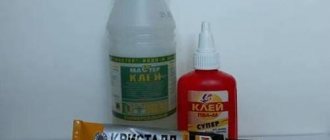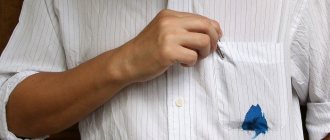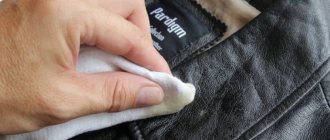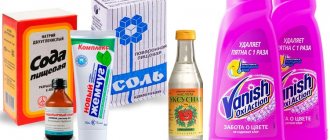What types of stickers are there?
It is not difficult to remove a sticker from clothing if you know its “origin”. How to distinguish one type of sticker from another? In some cases, a label will help, which will reflect this information, but most often you have to figure it out yourself. So how do you figure out what the design is on your T-shirt or cap?
- Iron-on adhesive. If the relief of the fabric is not visible, and the color scheme of the design is rich in halftones, tints and transitions, you are dealing with a thermal sticker. They are dense and cannot be ironed.
- Thermal printing design. Thermal printing and designs, as well as vinyl images, are not very dense. It will not be difficult to examine the texture of the fabric through such an image.
- Image on fabric.
- Vinyl based applique. Vinyl-based stickers are most often two-color, not too thick. If you look closely, you may notice that the relief of the material is visible through the image.
Goo Gone Remedy
This cleaner is made on the basis of citric acid. Therefore, it has good cleaning properties and can be used to remove drawings and stickers.
Before using the product, test its effect on an inconspicuous area of fabric.
How to remove the sticker:
- Take the liquid and soak a cotton pad in it. It is better to use a cotton cloth so that the lint does not stick to the material.
- Apply Goo Gone to the lettering. Do not overdo it with the amount of composition. Wait five minutes and start scrubbing the inscription. Goo Gone dissolves the adhesive base, so it's a pleasure to paint with it.
After removing the inscription and glue, wash the product in a machine or by hand. Do not place Goo Gone treated items with other clothing. Wash it separately.
This solvent is very strong and may damage other products.
You will need more washing powder than usual. To rinse the solvent out of the fabric well, do not spare it.
If Goo Gone comes into contact with your skin, an allergic reaction may occur.
You can wash clothes treated with it more than once to ensure that the product is washed out of the fibers of the material.
How to remove iron-on adhesive from clothing
If you are determined to get rid of decorations on your clothes, purchase a special product that will solve the problem in a matter of minutes. For those who do not have this opportunity, there are several options for removing thermal stickers at home using improvised means.
- Dryer. Place the item in the unit and set the temperature to high. When exposed to heat, the adhesive base of the decoration will become more pliable. And you can remove the thermal sticker without much effort.
- Warming up with an iron. Lay out the clothes on a flat surface, place sheets of paper under the image (both the front and back sides). Iron the image with an iron set to the highest heat setting until the decal transfers to the paper.
- Hair dryer or freezer. Not all items can be exposed to high temperatures, and for such cases, use a hairdryer to heat the base of the sticker, or place the item in the freezer for 2–3 hours. In both cases, the surface of the design will begin to crumble and peel off and you will be able to “scrape” it off the surface of the fabric.
The same methods will help remove a drawing or inscription applied with thermal printing from things.
Universal methods of influencing unnecessary applications
To begin with, you should try one of the gentle methods, but they are only suitable for gluing on the surface of dense, homogeneous fabric:
- Apply a stream of hot air from a hairdryer to the problem area for several minutes. After the texture of the raw material begins to change, we try to remove it with a dull knife or an old plastic card.
- The problem area should be soaked in medical alcohol and wait a few minutes, but the sticker should not be allowed to dry completely. Then we place the item of clothing under running water and, using dishwashing detergent, try to remove any remaining ornamentation.
- Light-colored fabric should first be treated as gently as possible. Any neutral liquid detergent with increased efficiency will work well for this. The surface of the T-shirt must be soaked through with this composition and left for several hours. Then you need to do a traditional wash.
- Using tape is an affordable and effective method that is not only suitable for delicate fabrics prone to stretching. Just press it to the surface of the sticker, press it well and tear it off. Repeat until all traces of the image are removed.
If these methods do not help or the risk of damage to clothing is too high, you will have to use specialized methods for cleaning the fabric.
- How to use an iron to glue a thermal sticker onto clothes at home with your own hands?
We recommend: How can you remove the second-hand smell from clothes yourself?
How to remove a vinyl sticker
You can remove vinyl stickers in the same way as thermal stickers - using heat.
The only difference is that after removing the sticker, you need to wipe the area where the removed pattern was located with vinegar. This will help clean the fabric from any glue residue.
- In addition, you can remove vinyl and other types of stickers using stationery tape. You need to press the adhesive tape firmly onto the image for 2-3 minutes and then quickly remove it. To remove the drawing completely, you will have to repeat the manipulations several times.
Before using tape, make sure that the material from which your item is made does not have an increased tendency to stretch and deform.
Freezer
You can also remove the sticker using a cold method. If the material cannot be exposed to high temperatures, use a freezer.
Place the clothes in the freezer for several hours. When exposed to cold, the image will begin to deteriorate. The drawing will crack and the glue will harden.
After which you can remove the sticker manually, tearing it off in small pieces from the fabric. Use sharp objects. Pry off the inscription with a stationery knife to make it faster and easier to remove.
You can freeze more than once. Use this technique until all the writing is removed from the T-shirt.
We suggest you familiarize yourself with How to wash fuel oil from clothes at home
How to remove rhinestones from clothes
- Often the designs on the fabric are decorated with rhinestones and sparkles. How to remove them from fabric? If you need to remove hardware, use a mild knife or metal nail file.
- Using one of these tools, carefully “remove” rhinestones and sparkles from the surface. Do not pull the fabric, act delicately so as not to damage the fibers of the fabric.
- When the decorations are removed, traces of glue will likely remain. You can remove them using one of the methods described below.
Features of removal by type
There are several types of patterns, they are made from different materials, and therefore the removal methods will differ.
Iron-on adhesive
The fabric base can be made of satin, velvet, satin or flex. Jackets, T-shirts, jeans, shoes, and workwear are decorated with such prints. Easy to apply and just as easy to remove.
Before removing iron-on adhesives from clothing, check the label. Suitable for getting rid of annoying inscriptions: hair dryer, freezer, chemicals. Such thermal decorations do not leave marks on things.
Vinyl stickers
Loose labels are similar to thermal printing. It is best to remove them with an iron and paper; this is the most effective and fastest way. After removal, greasy stains remain, which can be easily removed with dish soap or a rag soaked in vinegar.
Thermal Stickers
This is an ordinary non-voluminous pattern that is transferred to clothing using an iron. This type of printing is only suitable for cotton fabric. Any clear alcohol is ideal for thermal printing. Before erasing the inscription from a T-shirt with alcohol, you can warm it up slightly with an iron. The paint will become soft and the solution will perform its function faster.
Marker or paint marks
Acetone or solvent is suitable for removing such prints. They remove paint and glue perfectly. Thermal printing cannot always be produced with high quality. If the item is light, there is a possibility that color stains will remain.
Rhinestones and sparkles
Rhinestones can be removed in absolutely any way. If you want to do it quickly, an iron will do, but there may be some glue left over. When time permits, use the freezer. A solvent will quickly cope with the task, but after it you need to wash the clothes.
If your blouse is decorated with glitter, you can get rid of it using tape or a special roller. All you have to do is lean the glitter against it and quickly tear it off. All the glitter will remain on the Velcro.
Silkscreen printing
If the clothing has a convex and dense print, it means it was made using silk-screen printing. The question of how to remove a design from a T-shirt of this format is very relevant, since this is quite difficult to do.
You can buy a spray to remove paint, apply it to the ornament and wash the item after 15 minutes. Even this method does not provide a guarantee, so it is better to make a patch or print over the design if you are tired of the previous image or have become damaged.
Batik
Batik is painting clothes with acrylic paints. Such a pattern can be drawn only in the first minutes after application. Batik does not come off the fabric. If the thing is damaged or tired of you, then it is better to say goodbye to it.
There are no hopeless situations; there are many ways to update clothes. Choose the step-by-step method you like, experiment and enjoy things that can serve you for some time. If any method is not clear, use the help in photo and video format.
How to remove sticker adhesive from clothes
After removing the sticker, you will need to get rid of any traces of adhesive. To do this, you can use special products that are sold in household chemical stores, or use one of these methods:
- Remove adhesive traces using solvent or acetone.
- Use alcohol or alcohol-based products (such as lotion).
- Apply vegetable oil.
Before starting work, you need to test the selected product on an inconspicuous area of the fabric. This will help avoid damage to your clothes.
Helpful information
To get rid of traces of glue without harming the product, adhere to the following recommendations:
- Remove glue only in the direction from the edge to the center.
- You cannot rub the stain too long or intensely, so as not to damage the integrity of the item.
- You should begin cleaning the adhesive immediately after removing the sticker.
- After removing the stain, the item must be washed.
- Before cleaning, please read the information on the product label.
- You need to work with new things carefully, as they are prone to shedding.
Precautionary measures
To remove the sticker and completely remove stains from the adhesive base without damaging the material or the skin of your hands, you must observe the following precautions:
- Use rubber gloves when working with chemicals.
- When using special solvents, strictly follow the instructions for use.
- Test the selected products on inconspicuous areas of clothing, even if the product seems safe to you.
By following these tips, you can easily get rid of a sticker that is annoying or has become unusable, and keep your favorite item looking decent.
What to do if the drawing is made with paint
Acetone is most often used to remove images. Such a picture needs to be cleaned in several stages. Each of them must end with a hard wash of the product.
If there are any stains left, you need to remove them with regular dishwashing detergent.
You can also purchase a special paint thinner. It may be toxic. For personal safety, it is recommended to wear gloves and a protective mask.
Effective solvents:
- "White Spirit",
- "Composite"
- petrol,
- Special Solvent Vivacolor.
Liquids work very quickly. Sometimes it is necessary to apply the solvent several times.
Another effective remedy is turpentine. It evaporates quickly and removes paint well; it is used in workshops.
Adviсe
The process of cleaning the sticker will be more effective if you take into account the following nuances:
- It's better not to remove fresh stickers. They stick tightly to the fabric and are very difficult to remove.
- Before using any of the methods, clothes should be washed and dried. This must be done after processing.
- When choosing a cleaning method, you need to look not at the composition of the fabric and the sticker itself.
- During processing, the product must lie on a flat surface. It should be horizontal so that the cleaning liquid does not spread.
- A new remover should be tested on a small area of tissue first.
Impact of special means
You can also remove glue or label residues from clothes using various chemical reagents.
Types of funds:
- The most common and accessible glue solvent is any vegetable oil. In order to clean clothes with vegetable oil, you need to moisten the contaminated area with a small amount, then blot with a napkin or white cloth. These steps are repeated several times until the glue from the label is completely removed from the clothing.
Important! But when using this product there is a huge disadvantage: instead of traces of glue, you can get an oil halo on things. And you will have to look for ways to remove grease stains from fabric. One of these is to thoroughly treat with laundry soap, leave for 20 minutes, then wash the entire item in any way you prefer.
- There are special combined products for removing glue residues. Before using them, it is necessary to test the product on a small area of the product to make sure that the fabric is not deformed and the paint does not change its color.
- You can quite well clean off glue residue from clothing labels with alcohol, vodka or lotion.
- You can also use acetone or acetic acid. But this type of solvent is suitable only for natural dense fabrics.
Important! When choosing a chemical reagent, you should be careful:
- It is necessary to make sure that the product does not emit harmful and toxic fumes and does not remove paint from the product.
- We also must not forget that any chemical can be dangerous to both fabric and humans, and it should be used in small quantities, with gloves and in a well-ventilated area.
- If you decide to clean your clothes yourself, remember that you cannot use chemical reagents and elevated temperatures at the same time, since when exposed to elevated temperatures, chemicals can actively evaporate and penetrate the human body faster.











